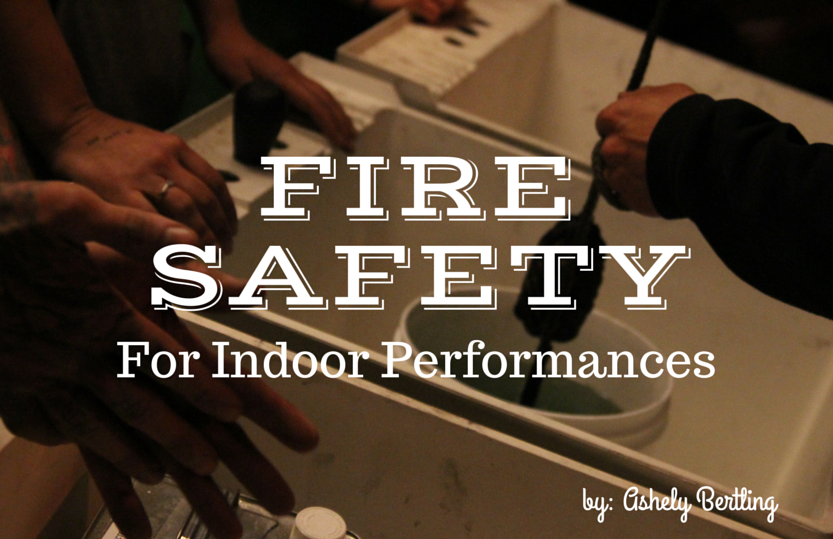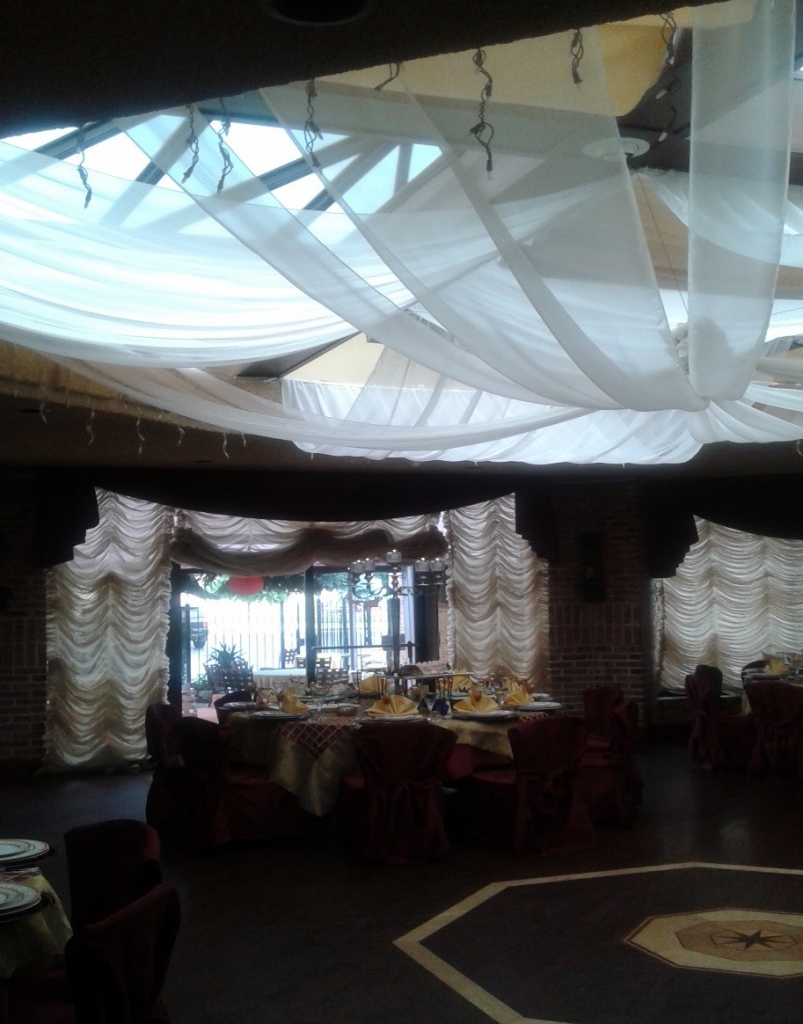The selection and execution of safe indoor fire performance is an obligation shared between the booking manager, performer(s), the designated safety person and the venue. Each participant of the performance needs to be cognizant of the potential safety hazards and safety adjustments made to accommodate the space’s limitations or performance enhancements. Safety begins before show time. The booking manager must work with the client (and/or venue representative) to determine if the performance space is appropriate for a live fire display. In the event the space is not safe for all in attendance, the manager must be prepared to sell a non-fire show or turn down the opportunity. Be prepared to turn down gigs due to unsafe environments and have a contingency plan.
[fusion_builder_container hundred_percent=”yes” overflow=”visible”][fusion_builder_row][fusion_builder_column type=”1_1″ background_position=”left top” background_color=”” border_size=”” border_color=”” border_style=”solid” spacing=”yes” background_image=”” background_repeat=”no-repeat” padding=”” margin_top=”0px” margin_bottom=”0px” class=”” id=”” animation_type=”” animation_speed=”0.3″ animation_direction=”left” hide_on_mobile=”no” center_content=”no” min_height=”none”]The booking manager reports their findings to the safety and performance team. Because each venue is unique, communication of the venue’s parameters is key to a safe fire performance as it allows the team to prepare. It’s the duty of the performer to select a fire prop that is appropriate and safe for the venue in which they are performing. This must superseded personal preference for a desired performance technique or effect.
Items for the booking manager and performer to consider when deeming if the environment and their presentation are safe are listed below:
Ventilation: Fumes emitted from performance equipment are not safe for inhalation. It is important to consider the emission of fumes from your fire props. Adequate ventilation or circulation of air may help to remove harmful fumes, however, some ventilation systems may also put the performer at risk. You need to verify the HVAC system in the venue will not blow air onto the performer at the time of their performance, especially if you are a fire breather. If reasonable ventilation cannot be confirmed for the amount of fire you want to present, a smaller prop, or smaller flame effect is your best choice. It is the combined responsibility of the performer and booking manager to ensure that the audience’s exposure to harmful fumes will be as limited as possible.
Ceiling Height: Ceiling height factors into both natural dissipation of fumes emitted and prop clearance. Larger and taller spaces inherently allow for better dissipation of harmful fumes. This can aid or potentially eliminate the need for mechanical ventilation. Additionally, proper overhead clearance should be considered when selecting props and assigning yourself to choreography for performance. The booking manager should confirm the height of the ceiling above the performance area as well as above the audience. It is highly recommended that the booking agent obtain an actual measurement of the ceiling height, or at minimum, a photograph of someone standing in the performance space for reference.
Stage Obstructions: Understanding placement of potential stage obstructions (like PA speakers, chandeliers, decorations, or lighting trees) assists performers in altering their stage placement for pre-determined choreography. Always arrive early enough to do a brief walk through of your performance space to verify stage obstructions are placed where you expected them. If you are not able to work around them contact the venue manager to ask pieces to be moved.
Stage Flooring: It’s essential to know before performance time what type of flooring material is used on your stage. Are you performing in the grass, on laminate, painted plywood, etc? Knowing this assists performers in selecting the appropriate footwear. We have observed non-porous surfaces (laminate flooring, polished hardwood, polished stone, etc.) are more of a danger to performers and venues than porous flooring (concrete, asphalt, etc.). Residual fuel from performance props collects on non-porous surfaces and makes the flooring both slippery and flammable. It is never advised to use oil based fuel (lamp oil or kerosene) when performing on a non-porous surface.
Distance: Fire Marshall’s want a 15’ clearing between performance members and the audience. To maintain positive relations with fire officials we recommend maintaining this distance.
Extinguishing: It’s a good rule of thumb to bring one fire blanket for each performance prop outlined in the set list. Using one extinguishing blanket per prop limits the amount of fumes emitted and decreases fuel transferring from your prop to your fire blanket. When this happens you can set your safety blanket on fire, making it rather useless. Should this ever happen, make your way to the closest identified emergency exit and extinguish by smothering with a larger damp towel or, in extreme situations, fire extinguisher.
To recap, you need to consider each venue based on whether or not the performers and the audience will be safe. the entire space comes into play including ceiling height, ventilation, flooring, obstructions, distance from audience, and performer comfort levels.[/fusion_builder_column][/fusion_builder_row][/fusion_builder_container]


